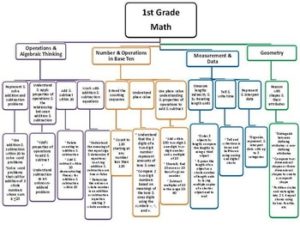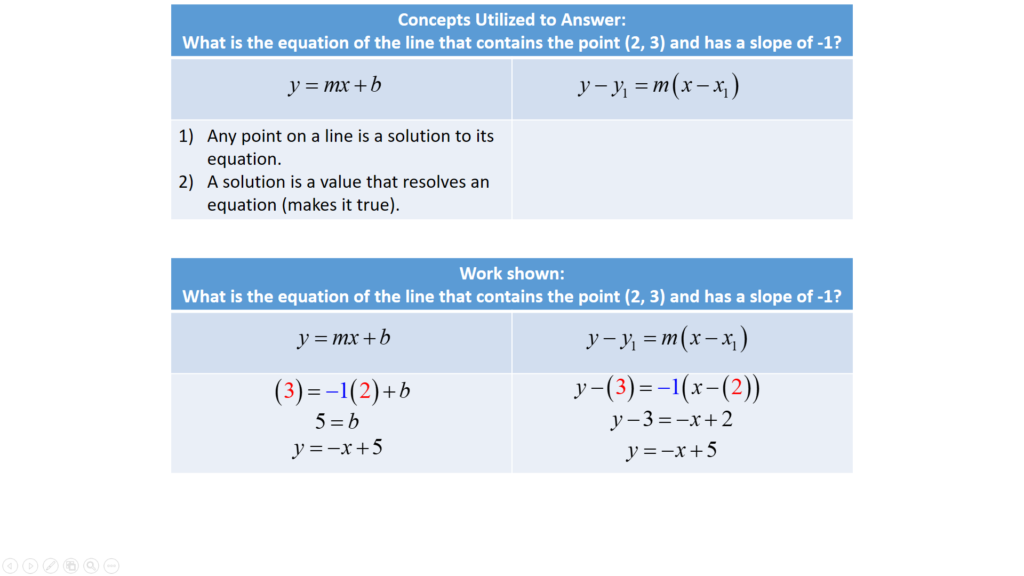One of the biggest problems in public education, math in particular, is answer-getting. And this is endemic, not the fault of students, teachers or administrators, legislators or parents … alone. Students seek answer-getting methods and are rewarded for finding answers. Teachers are given massive amount of curriculum to be covered in a year while at the same time deeper understanding is demanded. It’s not any one person’s fault, nor is it one party’s fault.
Leadership is trying to fulfill expectations and avoid tripping over the strings attached to funding. For example, graduation rates are a coveted measure of success of a school. On the flip side, what constitutes the requirements for high school graduation are not closely monitored, or incentivized. There is a lot of pressure to promote students through the ranks of education, starting in Kindergarten, even when it is not always in the best interest of the student.
 I won’t even get into how curriculum calendars and pacing guides became en vogue, but they are a massive burden on teachers. A teacher must decide to cover material on a predetermined schedule, and if they fall behind, they must hurry to catch up or face reprimand for not being on pace … This is complete insanity! Learning takes time and that time cannot be compressed. It cannot be compressed when students are cramming for tests (that aren’t strictly fact based), and it can’t be compressed during the school year either.
I won’t even get into how curriculum calendars and pacing guides became en vogue, but they are a massive burden on teachers. A teacher must decide to cover material on a predetermined schedule, and if they fall behind, they must hurry to catch up or face reprimand for not being on pace … This is complete insanity! Learning takes time and that time cannot be compressed. It cannot be compressed when students are cramming for tests (that aren’t strictly fact based), and it can’t be compressed during the school year either.
And yet, from the same mouths of the people who bestow the virtues of standardized testing comes the call for differentiation in education! What’s the saying about those who live in glass houses shouldn’t throw stones? I am working on a constructive solution to these types of things, but for now, I’ll do as my mother says and engage in silence on the topic as I have nothing nice to say.
All that said, all parties involved are well-intentioned. Yet, must traverse a jungle of pitfalls that land us in poor teaching.
There is one particular topic in Algebra that sticks around because it satisfies all of these pressures that, in the end, result in low-quality education. It is easily taught, gets quick answers and can be tested easily on a multiple choice (standardized) test: The Point Slope Formula. Now, I taught this formula for years. When I first heard its usefulness being called into question, when I first heard that it was a simple answer-getting technique, I bucked at the idea. I mean, after all, I am a good teacher who has high standards and plenty of rigor.
And that’s one of the issues with change. We are all part of the system, and while it is easy to break apart what everybody else is doing wrong, they’re part of the same system that produced you…look at yourself first. Back to the topic at hand…
A typical problem would say, Given the point (2, 3) and the slope of -1, find the equation of the line.
Students would use the formula below and they’d plug in 2 for x and 3 for y and -1 for m. Then they’d distribute and then solve for y. Dang, if they mess up distributing or the one step of inverse operations required, BOOM, there’s a chance for remediation or reteach or whatever the fancy phrase at the time is. 
But none of that, the process or the reteach would ever touch the nature of the question at hand. None of it would connect the question to the concept of linear equations and how graphs are related to equations, which means the students could not build upon that concept in the future.
The concept at play here is the nature of the relationship between dependent (x) and independent (y), how every point on a line is a solution to the equation, and perhaps even how slope describes the relationship between the dependent and independent variables.
If a student knows the following, they can arrive at a solution in a way that addresses practical issues at hand and without having to be taught yet another thing!
- The equation of a line can be written y = mx + b.
- The values of x and y are an ordered pair, which means they’re a solution to the equation we need.
Consider the following two tables where I show the concepts (related to linear equations) at play using the two methods discussed. Then, I’ll show the simplicity of one method versus the other. As is often the case, the method that approaches a problem from the concept has a simpler solution.

I do believe there is benefit from teaching and learning the point-slope formula, especially if it is taught when learning order of operations or how to distribute. But as a method of answer getting when learning about linear equations, I believe, it is inappropriate.
I hope this post caused you to pause and reflect upon your own teaching. What other things do we teach kids that circumvent the concept at hand in order for a quick grab at an answer? Leave me a comment, let me know your thoughts.
Thanks for reading.



